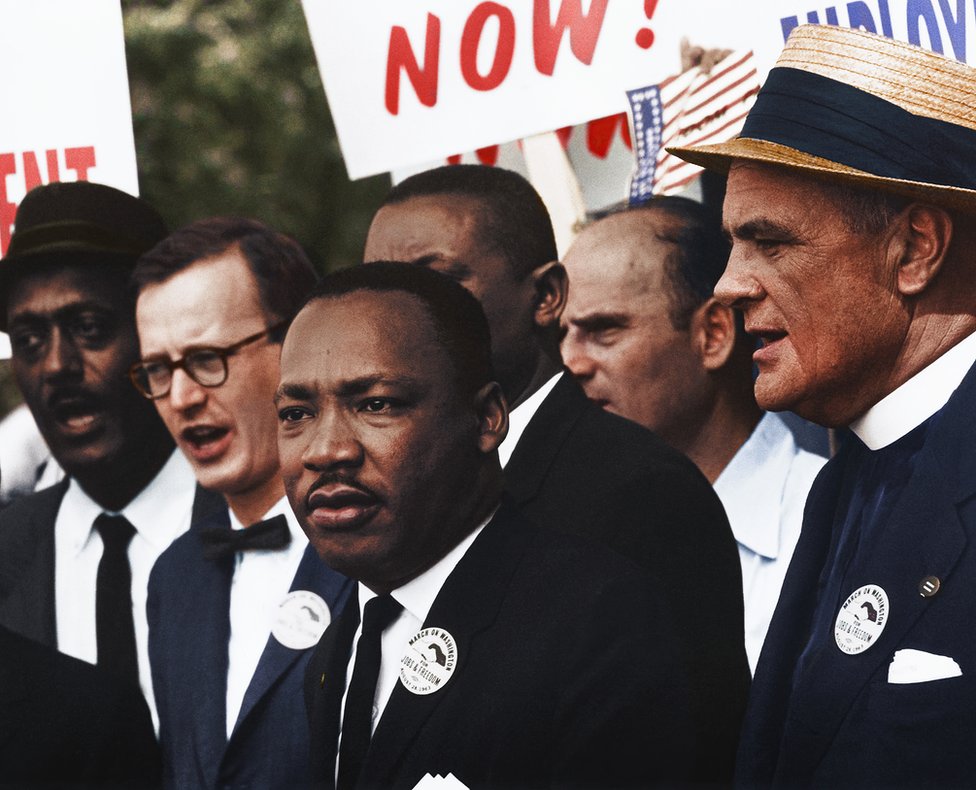Chapter One: Activism at Home
On August 7, 1960, New York’s Village Gate held the first of many concerts pertaining to the Congress for Racial Equality’s “Jazz Sits In” series. Such concerts were common in the struggle for racial equality, as they helped raise money for the cause and also allowed for people of the African-American community to gather themselves in support. This particular event was only the beginning of a long stream of benefit concerts to take place over the next few years and sets the scene of the relationship between jazz and the burgeoning Civil Rights movement. Jazz music enabled many of its musicians to enjoy a greater sense of authority in the African-American community over the Civil Rights movement as they grew in popularity in the public eye. These artists used their music in an attempt to bring greater attention to the race issue in America. Many created musical pieces to express their support, and used their talents to help promote Civil Rights organizations, such as the Congress of Racial Equality and Student Nonviolent Coordinating Committee, among others. The contribution of jazz to the Civil Rights movement was considered controversial in America because of the long and tumultuous history of race relations in the nation, but many jazz musicians, such as Max Roach, Thelonious Monk, Miles Davis, John Coltrane, amongst many others, embraced the music of their culture to show pride in the movement towards racial equality. They faced intense discrimination in their home country as many experienced explicit racism, from being banned from staying in conveniently located hotels on tour to not being able to participate in live radio broadcasts. Overall, racism greatly limited jazz music on the radio and decreased record sales, but many artists still sought to overcome this issue and spread their views on inequality in the United States. They used their music to promote freedom and raise awareness of the detrimental effects of racism.

Jazz musicians of color faced great discrimination in their own industry. These practices, such as the cabaret card and other tactics of police brutality, inevitably shaped the lives of these musicians and the music they created; ironically Jim Crow had ultimately helped to fabricate the genre and its audiences3. Jazz audiences, originally comprising of exclusively African-Americans and moving into more interracial territory over the course of the 20th century, could not ignore the racialized aspect of the music. Musicians of this era constantly faced racial prejudice, which made traveling for shows increasingly difficult. Hotel rooms were hard to come by, they had “difficulties in procuring food, and lack of toilet facilities on the road. Musicians stayed in boarding houses or private homes in the Black community, slept on the bus or in cars, ate take-out food,… and usually went into the theater from the back.” In some instances, establishments would not even allow their musicians to dine in the same restaurant in which they were performing. Additionally, even if a musician were able to afford a hotel, many of the them were for only for Whites, forcing musicians to outsource in terms of where they may rest for the night. This is particularly evident in looking at the Negro Motorists Green Book. The Green Book, a brochure for the traveling African-American, listed establishments in each U.S. state as well as abroad that would accept them as a guest. The majority of the establishments in the United States were on the lower-class end of hospitality, whereas establishments abroad could be as high-end as 5 stars, such as the Hotel Elysee-Park in Paris. This also is a commentary on the differing attitudes towards African-Americans at home versus abroad.

However, discrimination was not only limited to the traveling musician. New York City, beginning in 1940, was popular hub for jazz performers who faced blatant racism by the authorities. The police fingerprinted “every performer at licensed cabarets, issuing identity cards that were denied to ‘people they thought were not of good character.’” This statute led many famous musicians, such as Thelonious Monk, Miles Davis, and Billie Holiday, to be out of work for extended periods. Although this policy was intended to regulate the general disorderly conduct surrounding the world of jazz clubs in the 1940s and its audiences, it was most definitely highly influenced by racial prejudice when actually implemented. The “cabaret card” ultimately helped to bolster job competitiveness and and musicians’ desire for a defined culture of bebop.
